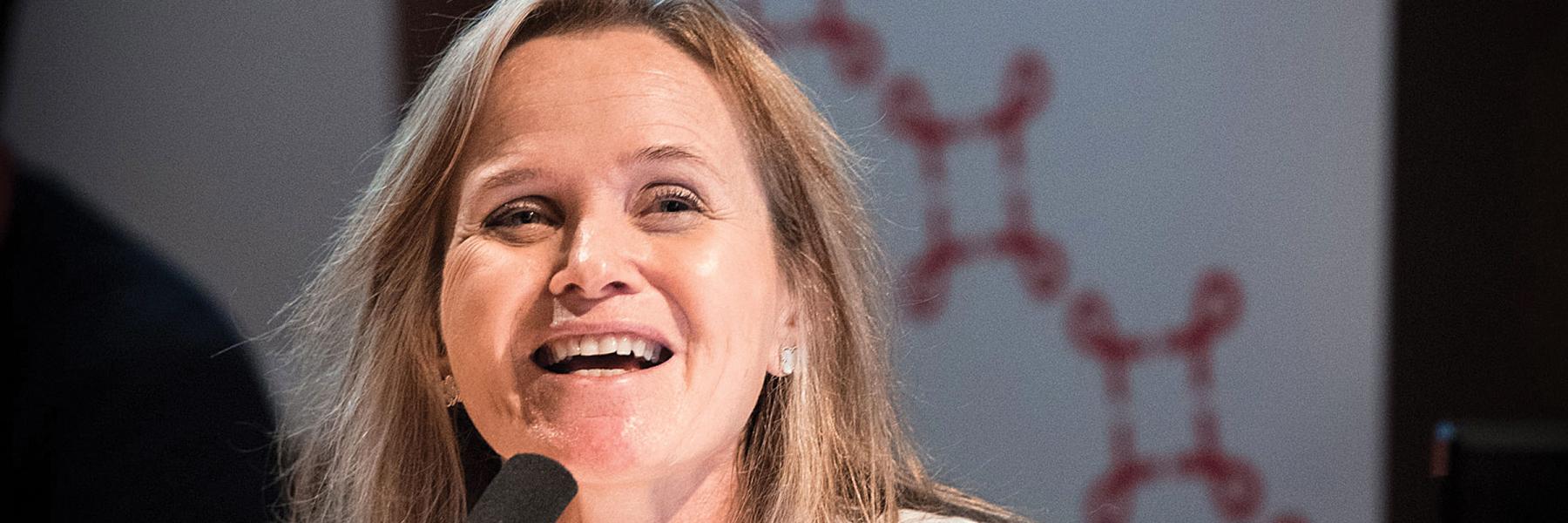
Seven years ago we spoke with HIV cure researcher Sharon Lewin at AIDS 2010 in Vienna. We caught up with her again at this year’s International AIDS Conference in Paris in July; below is a shortened version of our discussion. Read the complete transcript, as well as the original 2010 interview, at positivelyaware.com.
Could you summarize some of the biggest changes from seven years ago, where we are now, and where we’re headed?
Seven years later, I think we’re much more realistic about how hard this is going to be.
In 2010 it was 12 months after the Berlin patient was first reported, the initial studies on latency reversal were just coming out, and there was this optimism that we were going to be able to do this quite quickly. I think in the last seven years there have been a lot of things that haven’t worked. For example, repeat attempts at eradication through transplantation [which was successful for the Berlin Patient, Timothy Brown] have not worked either.
On the positive side, over the last seven years there have been a lot of case reports of post-treatment control, such as the Boston patients, the Mississippi baby, that have really shifted the goals of what we’re trying to achieve, to post-treatment control rather than cure.
Immune control is still going to be a part of it, and gene therapy; latency reversal and latency reversing agents are not going to eliminate HIV alone. We have a much better sense of where the reservoir is, and the role of tissue, that’s been a big change; also how complex viral persistence is—it’s not just latency and low-level proliferation, there’s virus in different T-cell subsets.
The other big change is that this is a big part of our next scientific challenge—back in 2010 there were very few people working on cure research, and it’s really exploded in the last seven years.
Seven years ago you said you thought that cancer would be much more challenging. Do you still feel that way?
Well, that’s interesting. Cancer’s not one disease. It’s very complex. There are some cancers that you can cure, there are some that can be put into remission, and there are some that you don’t have a hope for doing anything. Actually what’s changed in that period is there are more cancers you can cure now through immunotherapy or transplantation, so that field has changed dramatically. Immunotherapy, whether it’s anti-PD1, or CAR T-cells [engineering immune cells to treat cancer], or interferon, that field has exploded in cancer—the goal of the Cancer and Cure Forum is to see if we can translate those to HIV.
Could you give a brief synopsis of the case report presented by Timothy Heinrich at this conference of the man started on PrEP during early infection?
This is a good example of why just reducing virus to tiny levels can prolong time to rebound, but rebound happens. That was quite a sobering case. This was a man who presented in San Francisco on PrEP. At baseline he was already infected; he started PrEP and in about three days his RNA test came back and he was actually infected. His peak RNA was about 200 copies. It may have been lower on that third day, so they brought him back, rechecked him again, and put him on full antiretroviral therapy. He immediately became undetectable, and they followed him out for three years and checked for virus by undergoing leukopheresis, lymph node and rectal biopsies, and couldn’t find any sign of virus. He was undetectable and decided he would have a treatment interruption, and he effectively remained undetectable for about 10 months, when his virus rebounded. So he had un-measurable virus for a prolonged period of time on ART, about three years, a peak viral load of about 200 [copies], an unmeasurable virus in the reservoir, and then rebounded after about 10 months, so a little bit analogous to the Mississippi baby or the Boston patients. He had no immune response to HIV, he always had an indeterminate Western Blot, and then by six months he was non-reactive—he never developed an antibody response.
That’s probably for me one of the main findings of the conference, again reinforcing that early treatment of the virus reduces the reservoir but people rebound. That post-treatment control is probably a bit more common than we first thought, with people treated during early infection, depending on how you define post-treatment control. We had the Visconti patients but the definite denominator, it’s not clear how common it is. In Fauci’s study he did a placebo-controlled vaccine intervention study on people treated in acute infection and then they had a treatment interruption, and two of the people who had placebo had prolonged treatment control, up to two years now. So early treatment reduces the reservoir, it doesn’t eliminate it, and if you have maybe 10 percent of people that can stop treatment and have low-level viremia, maybe there is that sweet spot where you have to introduce treatment.
For more HIV cure news from IAS 2017 go to Richard Jeffery’s TAG HIV Basic Science, Vaccines, and Cure Project Blog.


